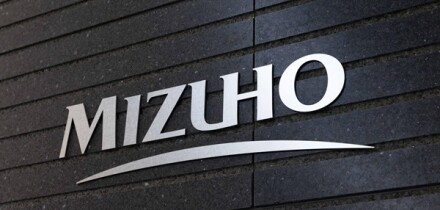There are two fundamental approaches to valuing risky debt and associated instruments. One relies on modeling the value of a firm, and implies the default event whenever the firm value drops below its liabilities. The other approach directly deals with the default risk by using the so-called reduced-form models. These come in three varieties: credit spread, default intensity and credit rating models. In this article we describe the credit spread-based models and demonstrate their advantage over the alternatives. We also show a practical way to implement such models.
The credit spread approach uses the current market information about the default risk of the underlying bond. It also provides an arbitrage-free vehicle for computing risk-neutral default probabilities to price the credit derivatives. To demonstrate this, consider a risky bond which promises to pay USD1 at maturity, and has a present value ofPt,T . Assume that the probability of default for this bond is pt in the interval [t, T] and the issuer pays a fraction R of the current price of the risky bond in the event of default. We also assume that the bond pays a default risk premium equal to øt to compensate for the default risk. For a single period case, this bond would pay USD1 with probability (1 - pt) in case of no default, or an amount of equal R with probability pt in case of default. Thus, the current price for this bond would be
where Dt,T =e-†T*rsds is the risk-free discount factor, and Lt,T = e -†T**sds is the factor corresponding to liquidity premium. To incorporate the effects due to lack of liquidity, one assumes that each credit instrument comes with a convenience yield which can be modeled as a process *t. In practice we can assume a deterministic value, or some probabilistic distribution, for the liquidity component of the spread. For liquid instruments *t = 0, but for illiquid instruments *t>0.
A common practice among the credit modelers is to switch among various curves that can be used as risk-free (instead of Treasuries). Quite often the LIBOR curve is used because its spread over Treasuries contains the cost of funding part of which is due to lack of liquidity. Spreads to LIBOR are widely available on the market in the form of asset swap spreads. Another example of such substitute curve is a triple-A curve for the corresponding industry.
Yet another approach is to introduce a coeficient * = *+ø, so that the credit spread is given by the product of (1 - *) and the total spread. Traders usually have an intuitive notion about the value of * for the given maturity and industry group of the underlying bonds. This way one also can allow for the cumulative effects of other relative carrying cost determinants. A comprehensive model of liquidity spread would require maturity-dependent drift and volatility terms, and a correlation with the credit spreads, but its calibration to the available market data would be nontrivial.
To price a credit-risky and illiquid bond, we must discount the possible cashflows appropriately. The recovery rate R represents the fraction of the bond's face value that is paid in case of default and thus should be discounted at a rate equal to rt + *t, ie. without the credit spread component. The remaining portion of the bond (1 - R) is subjected to credit risk, and should be priced using the risky rate (=rt + *t+øt). Than as an alternative to equation 1, the price of a risky bond can be expressed as follows,
Using equation 1 and 2 we can obtain the default probability in terms of the credit spread:
Using this equation, the risk-neutral probabilities can be obtained from the credit spread. It is easy to see that the price for the default protection, Gt for the period [t,T] should be given by the discounted value of 'portion of the bond at risk times the default probability'.
Once pt is available, it is fairly straightforward to compute options on defaults puts, and a variety of other credit options. Using equation 4, we notice that the value of a default option is proportional to (and not equal to) the difference between the price of a risk-free and risky bond. The price difference is multiplied by factor Lt,T (1 - R) which includes the effects due to recovery value, and liquidity component. For any values of R * [0,1] and * > 0, both of these components effectively reduce the value of the default swap. A multi-period generalization of the above formulation is acheived by multiplying the price for each period as in equation 4 by the probability of bond survival until the beginning of this period.
To incorporate the prospects of counterparty defaults we can consider structures called vulnerable default options. If protection is bought from a risky counterparty, one has to take into account the joint probability of default. If the bond issuer and the protection seller default simultaneously, the buyer of the protection will be compensated just for the fraction of his losses. That is why the riskier is the counterparty or the higher is the correlation between the issuer and the seller of the protection, the cheaper the default put must be.
The price of the vulnerable default put can be expressed the following way:
where RI is the recovery rate of an issuer as it was introduced before, RS is the recovery rate of a protection seller, P-SI is the probability of the issuer defaulting while the protection seller survives, and pSI is the probability of both defaulting at the same time the payment is due, in which situation instead of promised compensation for the losses (1 - RI) the buyer of the protection will receive just some fraction of it RS(1 - RI).
The critical part in equation 5 is the computation of the joint probability of default pSI, which can be constructed from the individual probabilities of default pS and pI extracted from respective credit spread term structures for the issuer and the put seller using equation 3 and the correlation * between the two credit spreads.
Let pI be an instantaneous default spread for the issuer and pS - for the protection seller. Then we can solve for the corresponding individual default boundaries bI and bS from pI(t,T) and pS(t, T).
where * (*) is cumulative Gaussian distribution function.
The intuition behind this approach is in interpreting the probability of default as the part of lognormal spread distribution that corresponds to default. In terms of Monte Carlo simulation it means that we can define default path as a path where simulated credit spread crosses the default boundary b. Then the ratio of default paths to the total number of paths can be expressed as * (b) and it should equal the probability of default p (t,T).
Using historical data, we can compute the correlation * between the issuer's and the protection seller's lognormal spreads. Then equation 6 about default boundaries can be extended to joint probability of default.
where * (*) is bivariate cumulative normal distribution function, and bI & bS are the corresponding default boundaries. To calculate pSI for equation 5 we can use the fact that pI = p-SI + p-SI . Now we have all the information to compute the price of a vulnerable default put. For a risk-free issuer pS = 0 and pSI = 0. Then p-SI = pI - pSI = pI and the equations 5 and 4 become identical.
The same argument can be expanded to price one of the most popular examples of credit derivatives--basket protection. The owners of the portfolio of corporate bonds can hedge their holdings by buying the protection on the first (second, etc.) loss in their portfolio. To price such a structure we assume an underlying credit spread model that can provide probabilities of default for every issuer in a basket. Then in the example of the first loss protection, the pricing formula is similar to equation 4:
where p* is the probability for the event that at least one of the bonds in the basket has defaulted. Consider an example of three risky bonds in a basket, A,B and C. If p(A), p(B), and p(C) denote the probability of default for various combinations of the three bonds. Then, the probability p{A or B or C} that at least one of the bonds has defaulted is expressed as
It is easy to see that the total number of combinations in three bond baskets case is 23 including the case of no defaults at all. The probabilities of all these combinations can be calculated using a methodology similar to equation 7. In each of these non-overlapping combinations, an associated payoff can be calculated. For nontrivial cases involving two or more bonds defaulting simultaneously with different recovery values, an average loss can be computed. The expected cost of the first loss protection is the sum of the losses over all the combination combinations weighted by the probability of the combination. The same methodology can be applied for the second and subsequent losses conditionally on the first loss being in effect. In the simplest case where all three bonds have the same recovery rate, we can obtain the price of the first loss protection by substituting equation 9 into equation 8.
To conclude, once we are able to strip the credit spread from the risky rate, the spread models provide a comprehensive approach for capturing the credit risk. The major advantage of modeling credit spreads as directly lies in its usage of the observable term-structure of credit spreads containing current market view about the default prospects. In addition, the spreads tend to be more forward looking (anticipatory) and more dynamic than the ratings that usually lag behind credit events. In essence, the approaches based on historical credit ratings do not model the causes of the credit risk, but try to predict future credit risk from historical default data. To improve predictive power one needs to calibrate the historical transition probabilities to the market credit spreads. In comparison with other prominent approaches, the firm value is not directly observed, its volatility is difficult to estimate, and it does not reflect the current term structure of corporate bond prices. The practical implementation of the models dealing with default intensity renders them as a special case of spread-based models. Even the simplest version of a credit spread approach allows us to price a wide variety of credit derivative structure and offers enough flexibility to incorporate a priori information.
This week's Learning Curve was written by Alla Gil, a v.p. in Citibank's credit derivative group in New York, and Naresh Malhotra, a consultant working for the global derivatives group at Citibank and Tech Hackers, in New York.





